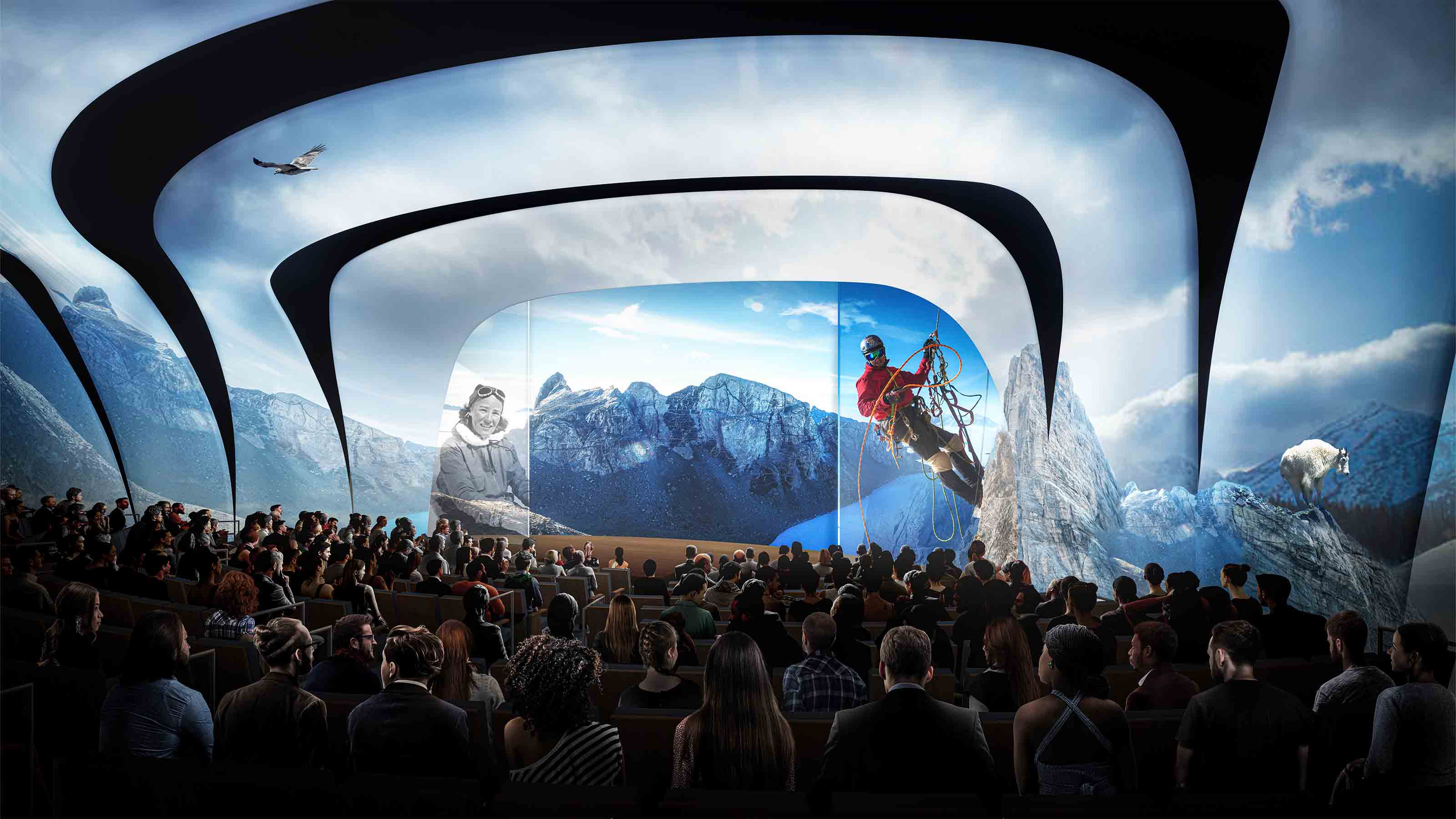Panasonic Creates Digital Canvas of Exploration at New Museum
Set to open in 2026, the Museum of Exploration at the National Geographic Society's Base Camp in Washington, DC, will feature media-driven exhibits and experiences.

The National Geographic Society has long made its home in Washington, DC, welcoming explorers from around the globe to share their experiences. Now, the society is expanding its Base Camp into a new era of discovery, with the Museum of Exploration (MOE) set to open in 2026.
According to Chris King, senior director, experience technology at National Geographic Society, MOE will serve as a public platform to illuminate and protect the wonder of the world. Supporting the exhibitions, experiences, and shows across the MOE is Panasonic Projector & Display Americas. The company's 4K projectors, displays, PTZ cameras, and KAIROS video switching technology bring the venue to life while preserving the past and preparing for future explorations.
King said Panasonic was the choice since Nat Geo began the project. "We’ve designed the MOE to be a digital canvas that elevates the work of National Geographic Explorers, and this partnership is helping bring this state-of-the-art destination to life," he explained.
According to Brian Duffy, strategic account manager, live entertainment, Panasonic Projector & Display Americas, Panasonic's newest line of 4K Solid Shine Laser DLP projectors were selected, including the PT-RQ7 Series, PT-REQ15 Series, and PT-RQ35K Series, along with the Panasonic TH-EQ3 Series 4K professional display.
So, what will explorers experience at the new museum? King described the National Geographic Learning Launchpad, powered by the Cengage Group, as an extraordinary interactive space that will inspire young people to connect with the concept of geographic thinking and to use geography in their own lives.
"The space includes a media-driven introductory corridor, hands-on activity room, and immersive projection room to present geography as a way of thinking, understanding, and interacting with the world," he added. "Visitors will learn to look at the world around them through places, patterns, layers, scale and time."


Also on the floor plan is the reimagined, 400-seat Grosvenor Auditorium with innovative Pro AV technology and storytelling tools that will envelop visitors through National Geographic films and stories. During the day, the courtyard will allow visitors to step inside the Yellow Border and discover the diversity of animals and plants that make up Earth’s ecosystems. In the evening, the space will offer a nighttime experience with visuals and audioscapes.
A daily selection of the top stories for AV integrators, resellers and consultants. Sign up below.
"This will be D.C.’s only spectacular outdoor nighttime destination, and it will bring the wonder of our world to life through the arresting visuals that National Geographic is known for, coupled with projection mapping, interactive media, and immersive sound," King said.
Duffy and his team looked at two important factors when deciding which solutions were best: maintaining the integrity of the photographers' work and ensuring longevity of operation. "When it comes to representing the photos, Solid Shine DLP technology is known for its ability to represent color standards easily and accurately," he said. "This allows images captured by National Geographic Explorers to be displayed as they were intended."
Panasonic's Solid Shine projection technology is also known for its longevity. As Duffy explained, 4K Solid Shine Laser DLP projectors are known to last twice or even three times as long as the life of comparative LCD technology. "In many cases," he noted, "a museum can capitalize on this equipment under an 8-10-year deployment cycle as opposed to a 3-4-year cycle seen with a 3LCD equivalent."
Of course, with any project, especially of this magnitude, there are challenges. "Each exhibit became its own project, and the team needed to manage all these simultaneously with one common goal and deadline," Duffy recalled. "To make this happen, National Geographic prioritized working with partners who have experience with these types of large projects. Our experience in live events, themed entertainment, and location-based entertainment projects on a global scale set us up well to tackle the unique challenges of this project."
New explorers will quickly agree that this is no ordinary venue. As promoted by the National Geographic Society, the Base Camp will be a place where visitors will come to experience "stunning imagery and photography, bold storytelling, and learn about the rich discoveries and expeditions of the past, with a watchful eye to the future and protecting our planet."
And Panasonic had just the right technology to make that happen. King said the company's "high-quality standards and products, experience across the industry, ability to support the design and engineering phases of the project, and excitement to work with National Geographic on fully custom installations made Panasonic the clear choice for supporting our project."
"We are honored to serve as a trusted technology partner and advisor for The Museum of Exploration," concluded Duffy. "It's such a unique and exciting project, making the design, planning, and collaboration process rewarding. We look forward to the opening of the museum and future projects with National Geographic."

Wayne Cavadi is the senior content manager of Systems Contractor News. Prior to taking a leap into the Pro AV industry, Wayne was a journalist and content lead for Turner Sports, covering the NCAA, PGA, and Major and Minor League Baseball. His work has been featured in a variety of national publications including Bleacher Report, Lindy's Magazine, MLB.com and The Advocate. When not writing, he hosts the DII Nation Podcast, committed to furthering the stories and careers of NCAA Division II student-athletes. Follow his work on Twitter at @WayneCavadi_2 or the SCN mag Twitter page.
